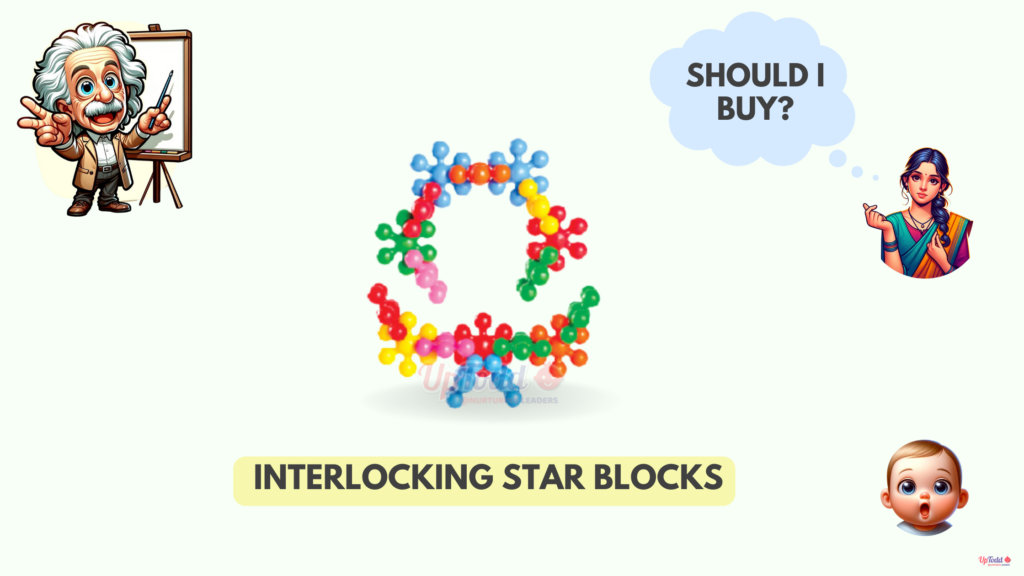
Welcome to our exploration of Interlocking Star Blocks. In this blog post, we’ll get to know more about this engaging toy, designed to spark creativity and enhance developmental skills in young children. Guided by our trusted advisor, the “Einstein Growth Guru,” we’ll uncover the benefits and potential drawbacks of this versatile toy, helping you to make informed choices for your child’s playtime.

Pros of Interlocking Star Blocks
Hand-Eye Coordination
Interlocking Star Blocks offer an excellent opportunity for children to develop hand-eye coordination. As they manipulate the blocks to fit together and create various shapes and structures, children learn to coordinate their hand movements with visual cues, fostering essential motor skills development.
Creativity
One of the standout features of this versatile toy is their capacity to inspire creativity in children. With their unique shapes and vibrant colors, these blocks encourage imaginative play and open-ended exploration. Children can experiment with different configurations, building towers, castles, and other imaginative structures, fostering creativity and problem-solving skills.
Fine Motor Skills Development
Engaging with these blocks supports the development of fine motor skills in children. As they grasp, stack, and interlock the blocks, children refine their hand muscles and hand-eye coordination, laying the foundation for tasks such as writing, drawing, and self-care activities.
Cons of Interlocking Star Blocks
Plastic – Long-Term Impact
One potential drawback of Interlocking Star Blocks is their plastic construction, which may raise concerns about environmental sustainability and long-term impact. Caregivers may prefer toys made from eco-friendly materials to minimize environmental footprint and promote sustainability.
Lack of Physical Activity
While this engaging toy offer cognitive and fine motor skill benefits, they may lack opportunities for physical activity. Children’s playtime should ideally incorporate a balance of both cognitive and physical engagement to support overall health and development.
Lack of Educational Value
While these blocks encourage creativity and fine motor skills development, some caregivers may perceive them as lacking in educational value compared to toys with explicit learning objectives. However, it’s essential to recognize the inherent educational benefits of open-ended play and exploration, which support cognitive development and problem-solving skills.
Age Recommendations
Interlocking Star Blocks are typically recommended for children aged between 18 and 48 months. Made from durable plastic materials, these blocks are designed to withstand repeated use and offer long-lasting enjoyment for children.
Final thoughts
In conclusion, Interlocking Star Blocks are a versatile and engaging toy that promotes creativity, hand-eye coordination, and fine motor skills development in children. While they offer numerous benefits for cognitive and imaginative play, caregivers should be mindful of potential drawbacks such as plastic construction and the need to balance playtime with physical activity. By understanding both the pros and cons of Interlocking Star Blocks, parents can provide enriching play experiences that support their child’s overall development.
Thank you for joining us on this exploration of this amazing toy. May your child’s playtime be filled with imagination, discovery, and endless opportunities for growth and learning!
Explore UpTodd luminary pathway to unleash hidden abilities of the baby.
